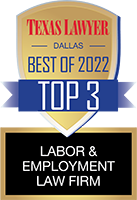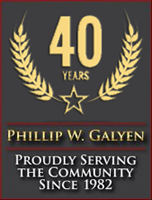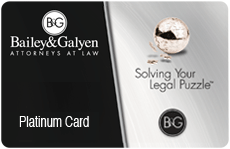The rules of the road in Texas are governed primarily by the Texas Transportation Code. This is the law, along with city ordinances, that police officers are trained to enforce. The only review of these laws for most Texas drivers was in their driver’s education course. Below are some of the traffic laws that are violated in very high numbers simply because drivers do not know that they are the law.
1. WIDE RIGHT TURN. In this situation you are approaching an intersection with the intent to make a right turn. The street you are turning onto has several lanes going each direction. Many drivers will swing out and turn into the first or second lane toward the center of the road. This is a legal violation that law enforcement refers to as a “wide right turn” In my estimation a majority of drivers violate this law when making right hand turns as they are simply unaware of the law. The Transportation Code provides:
Sec. 545.101. TURNING AT INTERSECTION. (a) To make a right turn at an intersection, an operator shall make both the approach and the turn as closely as practicable to the right-hand curb or edge of the roadway.
As you can see, you are required to turn “as closely as practicable” into the lane nearest to the right hand curb or edge of the roadway. The “practicable” exception could be if you were pulling a trailer and could not make the turn without going into the center or left lane to complete the turn.
2. TURN SIGNALS: In this situation you approach an intersection with the intent to turn right. However, you do not turn on your signal until you are at the intersection. This is a Fail to Signal violation as the Transportation Code requires that you signal your intent to turn at least 100 feet before initiating the turn. The Transportation Codes states:
Sec. 545.104. SIGNALING TURNS; USE OF TURN SIGNALS. (a) An operator shall use the signal authorized by Section 545.106 to indicate an intention to turn, change lanes, or start from a parked position.
(b) An operator intending to turn a vehicle right or left shall signal continuously for not less than the last 100 feet of movement of the vehicle before the turn.
Interestingly, the 100 foot requirement only applies to turns and not lane changes. Although you are required to signal your intent to change lanes, the law is silent on how long before the lane change your signal must be given.
3. FOLLOWING TOO CLOSELY: This is one of the most difficult to assess violations in the Texas Transportation Code. The law reads as follows:
Sec. 545.062. FOLLOWING DISTANCE. (a) An operator shall, if following another vehicle, maintain an assured clear distance between the two vehicles so that, considering the speed of the vehicles, traffic, and the conditions of the highway, the operator can safely stop without colliding with the preceding vehicle or veering into another vehicle, object, or person on or near the highway.
This broadly written law puts law enforcement in the position of making a judgment call on if your vehicle is too close to the one in front of you. The best advice is always keep several car lengths of distance between you and the car in front of you.
4. DRIVING ON SHOULDER: You are approaching a slower vehicle on a two lane road. You want to pass this vehicle but there are cars in the opposite lane of traffic that won’t allow you to pass on the opposite lane of traffic. You then proceed to pass on the shoulder. This is a violation of the law.
Sec. 545.058. DRIVING ON IMPROVED SHOULDER. (a) An operator may drive on an improved shoulder to the right of the main traveled portion of a roadway if that operation is necessary and may be done safely, but only:
(1) to stop, stand, or park;
(2) to accelerate before entering the main traveled lane of traffic;
(3) to decelerate before making a right turn;
(4) to pass another vehicle that is slowing or stopped on the main traveled portion of the highway, disabled, or preparing to make a left turn;
(5) to allow another vehicle traveling faster to pass;
(6) as permitted or required by an official traffic-control device; or
(7) to avoid a collision.
The law does not allow you to pass on the shoulder unless the car you are passing is disabled or slowing in the lane of travel to turn left. However, the slower car is allowed to use the shoulder to allow you to pass in the main lane of travel. You can use the shoulder to slow down before making a right hand turn. Finally, you may use the shoulder when required to avoid a collision.
5. PASSING EMERGENCY VEHICLE. This law was passed in 2003 and has drawn the ire of many motorists. In this scenario you are driving down the highway in the right lane when you notice a police car with his emergency lights on that has another driver stopped on the right hand shoulder. You continue in the same lane at the same speed as you pass the police vehicle. You have violated the law. The law states:
Sec. 545.157. PASSING AUTHORIZED EMERGENCY VEHICLE. (a) On approaching a stationary authorized emergency vehicle using visual signals that meet the requirements of Sections 547.305 and 547.702, an operator, unless otherwise directed by a police officer, shall:
(1) vacate the lane closest to the emergency vehicle when driving on a highway with two or more lanes traveling in the direction of the emergency vehicle; or
(2) slow to a speed not to exceed:
(A) 20 miles per hour less than the posted speed limit when the posted speed limit is 25 miles per hour or more; or
(B) five miles per hour when the posted speed limit is less than 25 miles per hour.
This law requires you, when on a road with two or more lanes traveling in the direction of the emergency vehicle, to put a lane between you and the officer if you are going to maintain your speed. If you are on a two lane road or remain in the lane next to the officer, you must slow to a speed 20 miles per hours less that posted speed if the speed limit is 25 or more.
The above are just a few of the most often violated portions of the Texas Transportation Code. Reviewing the laws periodically will certainly give you the knowledge to better understand what violations law enforcement are looking for.








